The Evolution Of Smart Utilities
By Fred Ellermeier, Vice President and Chief Operating officer, Smart Integrated Infrastructure (SII), Black & Veatch
Advances in telecommunications, automation, and data analytics are changing the relationship between utilities and their customers. The 2015 Black & Veatch Strategic Directions: Smart Utility report provides an analysis of important planning, investment, and security challenges and opportunities, along with insights on how utilities and cities can achieve their service, resiliency and, ultimately, smart city goals. In anticipation of a new Smart Utility report from Black & Veatch in February 2016, let’s review three key talking points from the current data.
Managing a Telecommunications Change
Utilities are increasingly sunsetting legacy connections, such as a frame relay, and moving toward Internet Protocol (IP) and multiprotocol label switching (MPLS) systems for speed and reliability gains. Some utilities are completely embracing a converged mentality, running everything over a shared infrastructure, while others are keeping protective relaying and other mission-critical applications separate from the converged network.
As utilities try to navigate a more technologically complex landscape, increased regulatory scrutiny, and a changing workforce represent a veritable “piling on” of issues that need to be prioritized. These concerns however, do not seem to have stymied investments in infrastructure upgrades; nearly 60 percent of providers are planning for replacement, upgrades, or new communications infrastructure in the next five years. They are investing to meet demand for smart grid and smart utility upgrades and to support security initiatives, and a now mobile workforce.
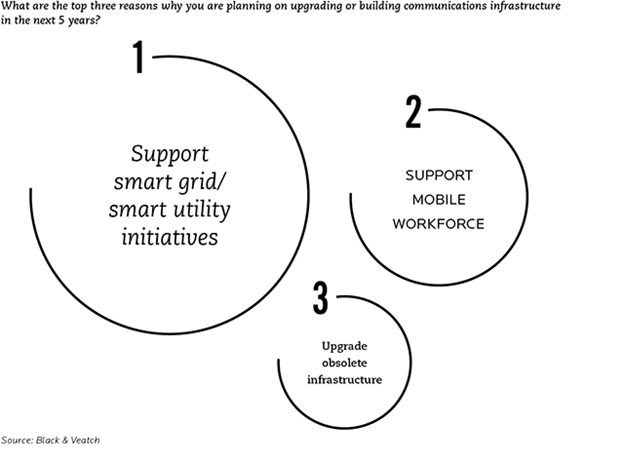
Technology’s promise of efficiency and cost-savings brings with it concerns about planning and readiness. The implications of the move to IP also require an analysis of affordability and scalability for utilities. Other traditional data management systems are being jettisoned in favor of more advanced technologies such as multiprotocol label switching (MPLS).
Planning for telecommunications change also means preparing for increased scrutiny of network security. This renewed focus is apparent as electric utilities increasingly initiate or consider implementing privately operated networks instead of piggybacking on public carrier networks. Seventy percent of electric utilities said they now operate a private communications network for transmission and distribution.
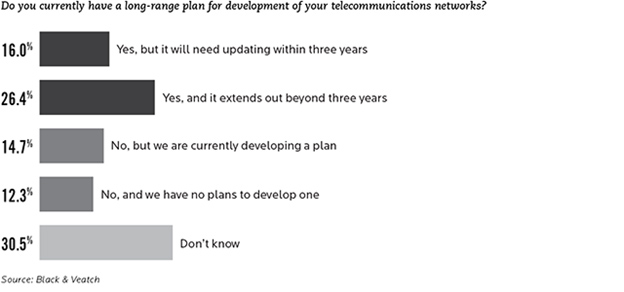
Automation + Data Analytics = Smarter Utilities
Utilities are upgrading their networks in order to take advantage of advances in smart-grid and utility automation technologies. With information being uploaded from smart devices, utilities are now able to react and scale in real-time. Despite the efficiency gains brought about by increased visibility, Black & Veatch finds that many utilities and other providers are on the sidelines of the utility automation movement. This reluctance implies that utilities are either unconvinced of the benefits of utility automation or in “wait and see” mode – preferring to let other institutions test the systems and prove their worth.
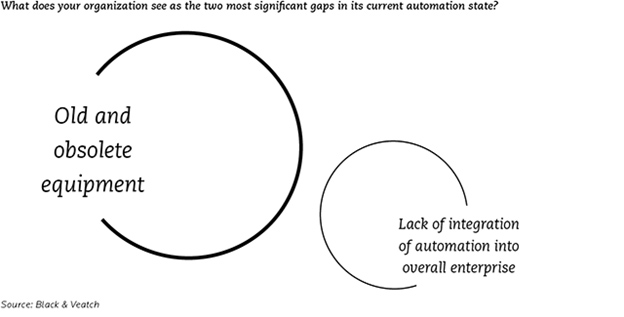
However, the gains may finally be too big to ignore. Utilities are making the business case, believing the cost savings and efficiencies exceed automation’s investment. Those that have not yet considered utility automation face risks, both in the long- and short-term.
The opportunity may lie with data analytics. Budget considerations that deter investment and customer experience goals can be mitigated by leveraging the data generated and captured by automated systems and smart devices. Organizations that use data analytics tools are better able to manage costs and improve their organization’s performance. Thirty-six percent of surveyed water utilities, for example, are adopting descriptive analytics programs to improve performance. Electric utilities opt to deploy more advanced predictive analytics programs.
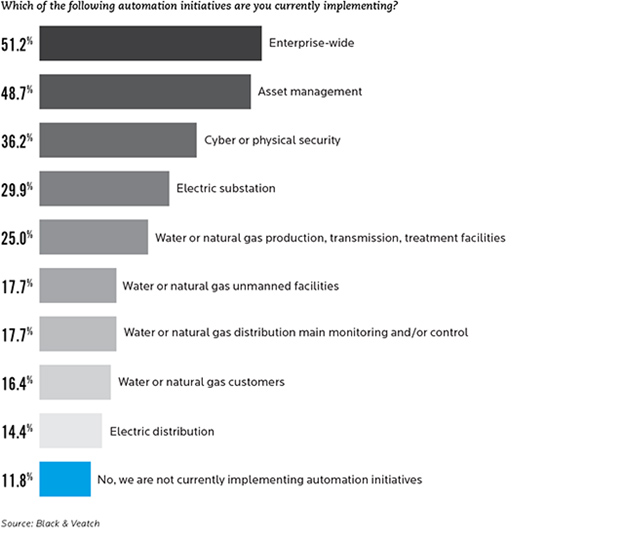
Utilities that delay implementation of automation and data analytics programs risk having insufficient information to mount rate cases, which ultimately affects their ability to move forward with needed upgrades to aging infrastructure. With reliability and efficiency mandates, the results of inaction can be far-reaching.
Smart Utilities, Smart Cities
Across all utility sectors, pressure to meet the requirements of technology deployments means more challenges and more planning. With planned investments in infrastructure, operations, and customer services initiatives amounting to billions of dollars, the Strategic Directions: Smart Utility report underscores how the increasing use of technology offers utility operators greater understanding of their networks, other utilities and the communities they serve.
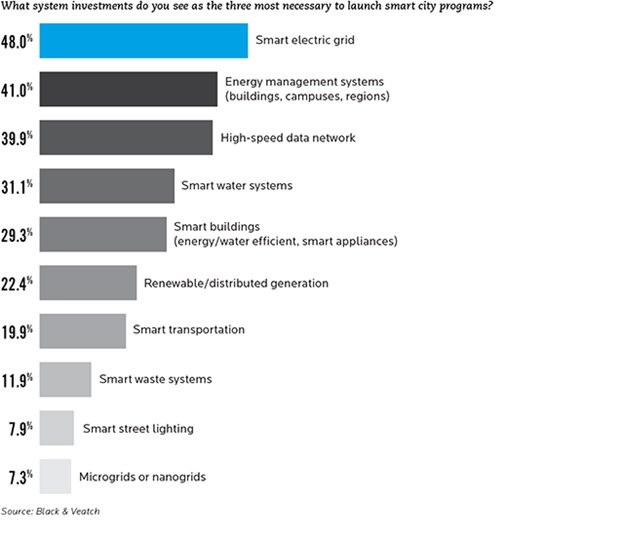
Leveraging the cloud, utility automation, and data analytics are helping utilities to better plan for and execute on their investments. Adaptive planning solutions are emerging as effective tools in this effort. Adaptive planning solutions use historical and real-time data to create, compare and optimize complex planning decisions, including the visual identification of investment priorities using a risk-based approach. Adaptive planning can be used to evaluate investment, operations and other options, shape maintenance plans, and validate performance against estimates among other functions.
Supporting smart grid deployment and resiliency and efficiency planning – cited as among top reasons utilities are upgrading their infrastructure – is heavily dependent on the strategic use of automation tools and buy in from consumers.
Collaboration too, is an important consideration for the modern smart utility. They, along with city managers, and businesses, are working to incorporate information sharing in order to better provide services and coordinate in times of market, climate, and demand pressures. This cooperation is a central component of smart city systems.
